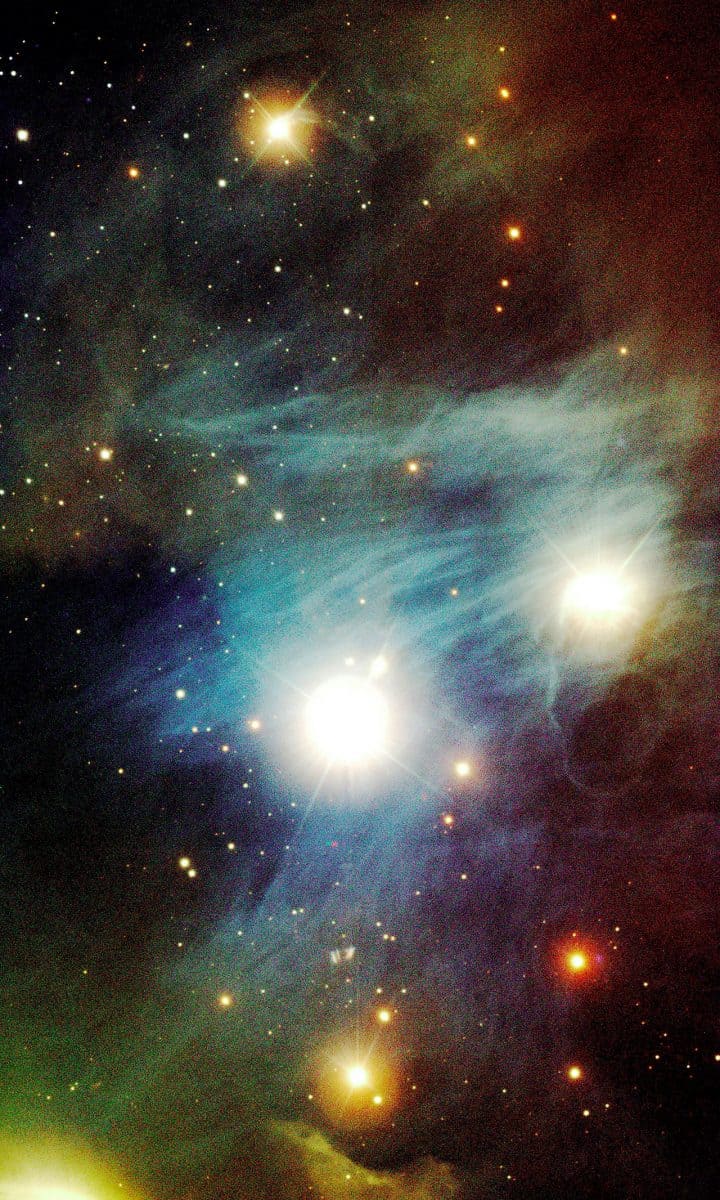The Cosmos with Chamaeleon I
This colour-composite image was obtained by FORS1 on ANTU. It displays a sky area near the Chamaeleon I complex of bright nebulae and hot stars in the constellation of the same name, close to the southern celestial pole.This picture was taken a few days before the Paranal Inauguration and the “hand-over” to the astronomers on April 1, 1999.This colour composite photo of the Chamaeleon I area is based on six 1-min exposures obtained with VLT UT1 + FORS1 in the V, R and I bands. The sky field measures 6.8 x 11.2 arcmin2; North is up and East is left.
A photogenic group of nebulae can be found in Chamaeleon, a constellation visible predominantly in skies south of the Earth’s equator. Towards Chamaeleon, dark molecular clouds and bright planetary nebula NGC 3195 can be found. Visible near the center of the above photograph is a reflection nebula surrounding a young bright star. On the lower right, a dark molecular cloud blocks the light from stars behind it. It takes light hundreds of years to reach us from these objects.
In 1999, a nearby open cluster was discovered centered on the star η Chamaeleontis. The cluster, known as either the Eta Chamaeleontis cluster or Mamajek 1, is 8 million years old, and lies 316 light years from Earth.
The constellation contains a number of molecular clouds (the Chamaeleon dark clouds) that are forming low-mass T Tauri stars. The cloud complex lies some 400 to 600 light years from Earth, and contains tens of thousands of solar masses of gas and dust. The most prominent cluster of T Tauri stars and young B-type stars are in the Chamaeleon I cloud, and are associated with the reflection nebula IC 2631.
Chamaeleon contains one planetary nebula, NGC 3195, which is fairly faint. It appears in a telescope at about the same apparent size as Jupiter.
